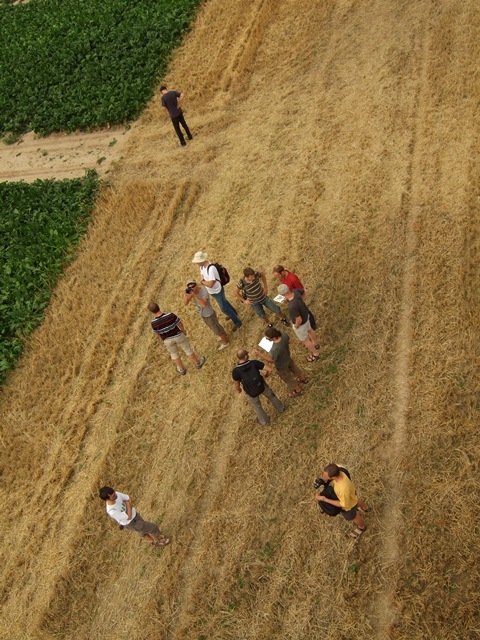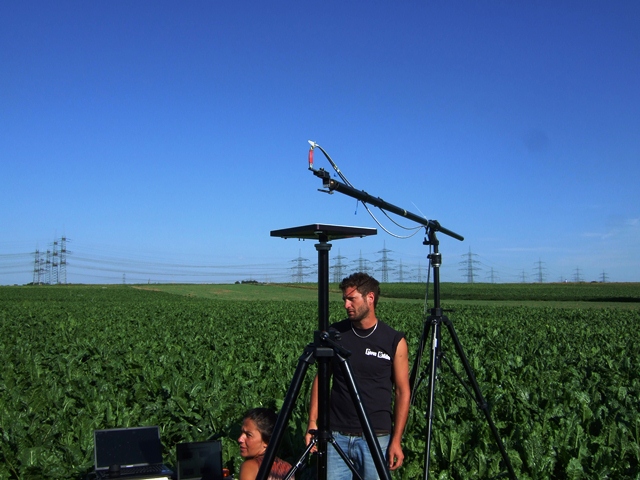From Dirk Schuettemeyer (ESA) & Uwe Rascher (Forschungszentrum Jülich), Germany, 5 September
For the last two weeks we have been following the HYFLEX campaign 2012, which started in an area in western Germany between Bonn, Cologne and Aachen.
The aim of the campaign is to use, for the first time, a novel airborne sensor called HyPlant, which was developed by the Forschungszentrum Jülich in Germany and the Finnish company Specim.
The campaign will hopefully provide valuable information on the capabilities of a new Earth observation satellite mission concept called FLEX and will help ESA and collaborating scientists in the design of the mission.
The HyPlant instrument can be regarded as a camera that measures more wavelengths (colours) than our eyes can see. The aims is to use this instrument tomeasure vegetation fluorescence, which can be converted into an indicator of photosynthetic activity.
To begin with, we want to look at simple plants such as grass and sugar beet. The scientists involved in the campaign already know a lot about the behaviour of these planets from ground measurements. However, they have never taken measurements using an airborne instrument.
The actual quantification of canopy fluorescence is still a challenge and, thus, researchers from nine European countries (Germany, Switzerland, Greece, Czech Republic, Spain, Finland, Luxemburg, Italy and France) have met up to carry out his campaign. If successful, the scientists will be able to determine how healthy plants are and potentially the rate of carbon fixation.

Group discussion close to the main fields. The picture was taken from a small tower, which was used later to take measurements. (ESA)
They are using a wide array of instruments to measure sun-induced fluorescence from the level of single leaves up to the airborne sensor, including a detailed characterisation of the atmosphere.
The logistics of working with an international team can be a challenge. For example, to correctly capture the dynamic changes in plants all the computer clocks had to be adjusted. This little thing could cause a person from Italy sitting in front of a German computer trying to find out what ‘daylight saving time’ means in German.
The most interesting part of the campaign is the new airborne sensor, which provides unprecedented spectral resolution. The sensor was first tested in Finland and then shipped to Luxemburg for installation and certification. On Monday 20 August, the sensor and all the ground teams arrived in the campaign area and briefings and preparations started.
Despite the fact that a dense network of infrastructure had to be installed, all the teams worked efficiently and we could carry out the first test measurements in reasonable weather by the Wednesday. Most of the measurements worked fine and we could optimise the measurement protocol and decided for an ambitious measurement day on the Thursday.
The weather forecast for Thursday was ideal, however we experienced some high cumulus clouds in the morning. Nevertheless, we decided to start as planned at 11:00 local time and our airplane took off to have a look at the plants from above. Fortunately, the weather improved and around noon we had almost perfect blue skies. The weather remained good so we could gather a potentially excellent dataset, covering time series of various types of vegetation.
The ground teams’ work was also exceptional and were able to record all the necessary ground data to check if the new sensor really worked. It was really impressive to see all the groups on ground, measuring with different instruments. They even used small quadrocopters that flew up to 100 m to get an estimate of the plants’ temperature.
It is simply fascinating how well and smoothly the expertise of the contributing groups merged into an orchestrated field campaign, promising a novel experimental dataset on fluorescence. We are looking forward to seeing the data and first ‘quick looks’.
We would greatly want to thank all the teams and people, who contributed to this measurement day. As a next challenge, the whole team will move to the Czech Republic to acquire the first flight lines over natural forest and where ground data will be much harder to gather.










Discussion: no comments